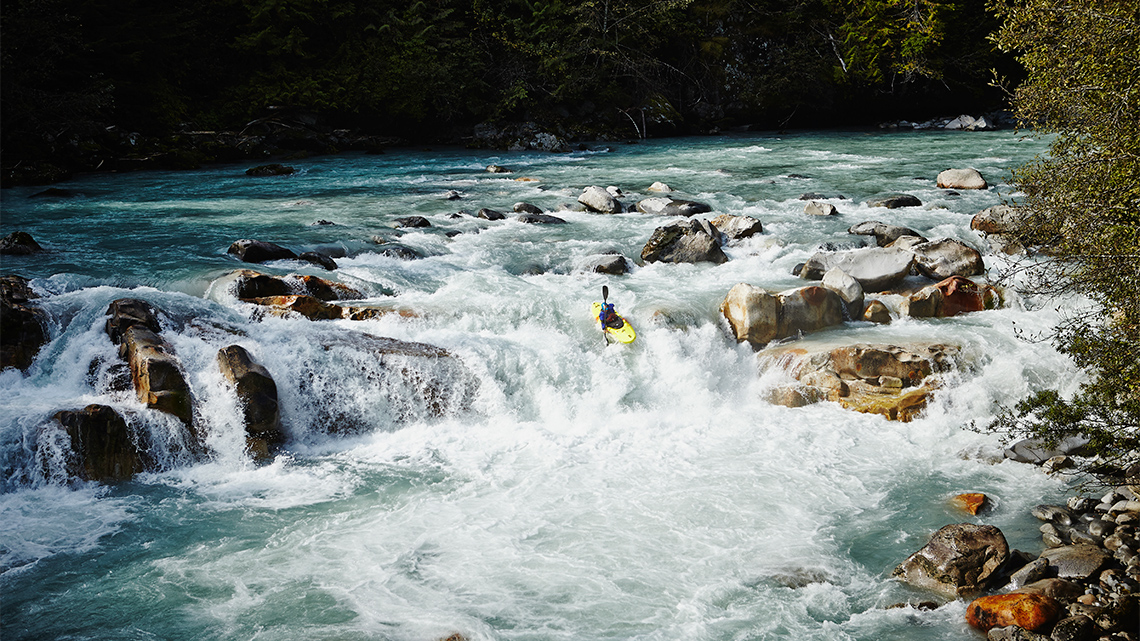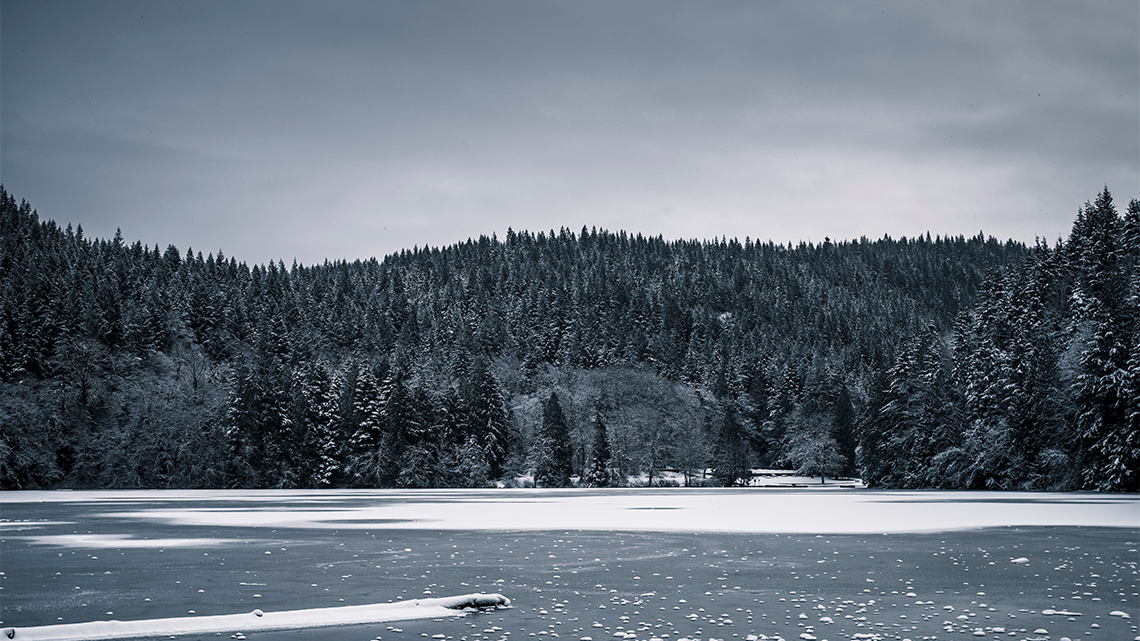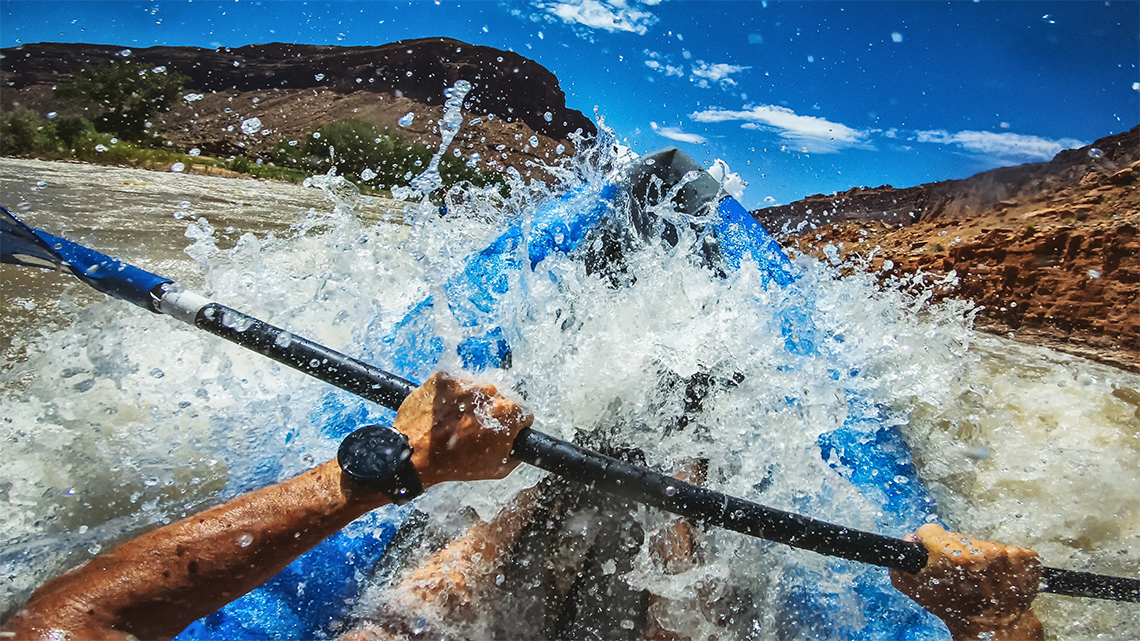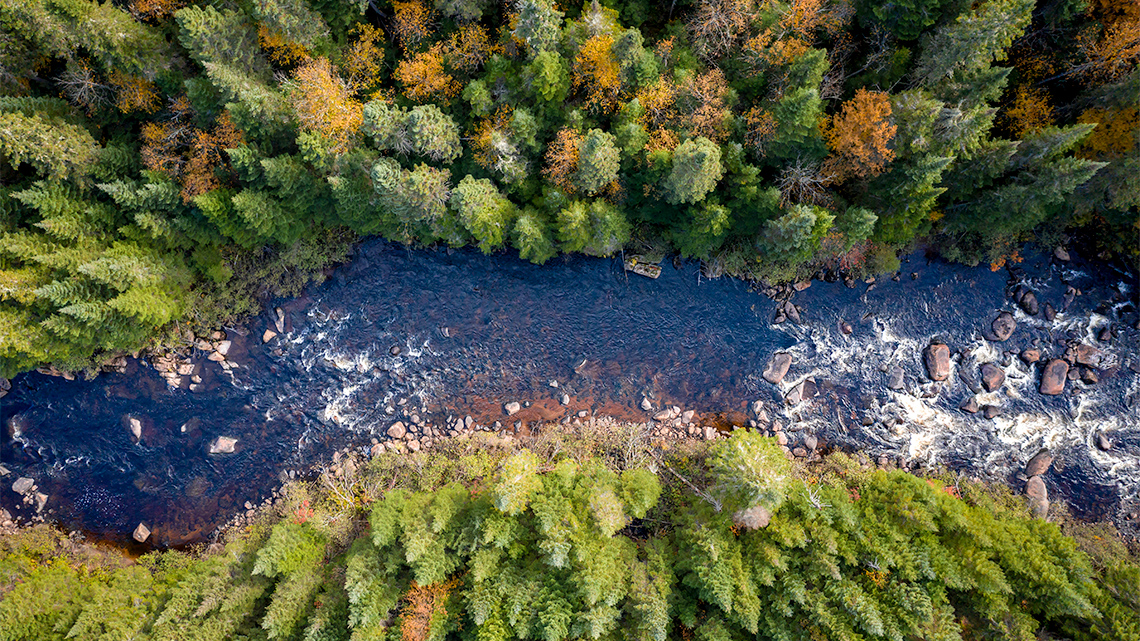Minds On
Warm up
Before you begin, don't forget to do your safety check!
Warm Up
Breathing exercise

Find a comfortable position. Focus your attention on one part of the body at a time.
How does that part of your body feel? If possible, take a deep breath and allow your lungs to expand.
Focus your attention on one part of your body. Allow that part to relax before moving on to the next. As you scan through your body, keep breathing deeply. Once you have completed the scan, take a moment to stretch.
If you wish, you can access this recording entitled Deep Breathing to complete your breathing activity.
Deep Breathing
Drama game
Explore the images of water below. As you go through the carousel, come up with three to five words to describe each image.
Record your ideas digitally, in writing, or as an audio recording.
If possible, when you are finished, read out the words. How do they make you feel?
Let’s get started
Brainstorm
What is your relationship with water?
Consider the following questions:
- What is your relationship with water?
- How is water a part of your daily life?
- Why might water be important to life on earth?
- Why might it be important to protect the bodies of water on our planet?
Brainstorm and record your ideas using a method of your choice. You may also share your brainstorm with a partner, if possible.
Action
Get ready, get set…
Relationships to water
Autumn Peltier is an Anishinaabe youth from Wikwemikong First Nation. When she was 8 years old, Autumn attended a ceremony at the Serpent River Reservation and noticed a sign that indicated the drinking water was toxic. At this point, she learned that many people in Canada do not have access to clean drinking water and began to advocate for the protection of the waters.
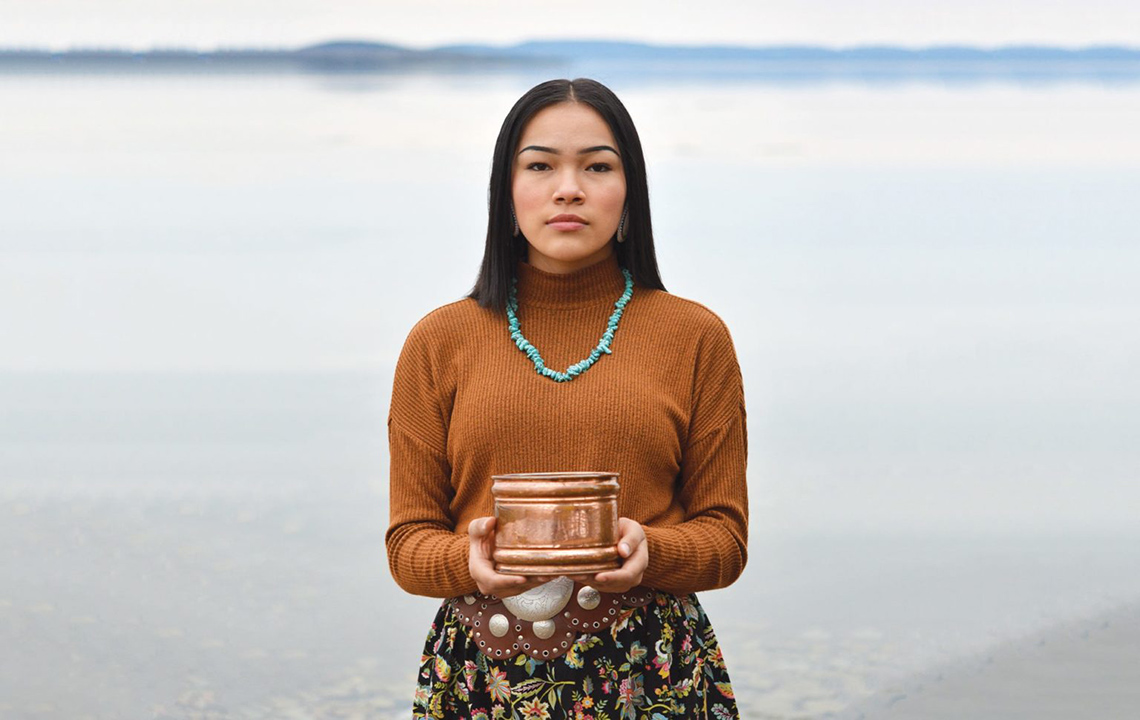
Indigenous worldviews offer a different perspective on understanding science and the environment. Indigenous worldviews consider the interconnectedness of all living things. Though distinct, most if not all Indigenous perspectives believe that the land, the waters, the sun, the moon, the rocks, the hills, the mountains, the wind, and the sky all have a spirit and are animate, living things. Within many Indigenous languages, the names for the rocks, the lands, and the waters are described using animate language because of the spirit that lives within each.
Within Indigenous worldviews, it is understood that all of the elements in the universe are connected and that they are all dependent on one another for life. Humans are not superior to any other living part of the Earth. Rather, humans must respect the Earth and treat it well, not just for this generation, but for generations to come.
In the Minds On section, you considered your own relationship with water. Explore the following video to learn more about Autumn’s own relationship and understanding of water. This video is from 2019 when Autumn Peltier had the opportunity to speak at the United Nations Global Landscapes Forum.
After you have explored the video, answer the following questions:
- What did you learn from Autumn Peltier’s speech? Did any part of the speech surprise you?
- If you could ask Autumn Peltier a question, what might that be?
Record your responses using a method of your choice.
Go!
Let’s return to the relationship that different individuals have to water. After exploring the work of Autumn Peltier, has your understanding of water changed?
What is your own relationship with water?
Press ‘Hint’ to access an example.
I drink water and use water to bathe and swim. Water keeps me hydrated which helps protect my skin and internal organs. When I hear water, it makes me feel calm. When I swim in water or wash with water, it feels cool and smooth.
How might you express this relationship through drama?
Expressing ideas through drama

In drama, we can use different ways to share thoughts, ideas, and important messages. Explore the following examples of ways we can express ourselves through drama. These are called drama conventions.
What drama convention might you use to share your relationship with water?
Press the following tabs to explore different drama conventions.
A tableau is a silent, motionless picture. In drama, we can use tableau to express different themes, feelings, and ideas. Tableaux may be presented as stand-alone images to communicate one specific message or may be used in a longer drama work.
Explore the following video entitled “What is a Tableau?” to learn more about how to create a tableau.
Explore the following example of how someone could create a tableau.
I might create a tableau sharing the different ways I use water (e.g., drink, swim, etc.) and transition between each frame by moving my body fluidly like water. I might end my tableau with my arms out, thanking water for what it provides me.
A monologue is a long speech by one character in a drama that is intended to provide insight into the character.
Explore the following video to learn more monologues.
Explore the following example of how someone could create a monologue.
I might create a monologue sharing how I feel when I go swimming in the lake on a hot day. The water is refreshing and smooth and supports my movement. I enjoy the moments that I have when I get a chance to swim or cool off in the water.
When a speaker describes the action that is occurring in a drama, it's called narration. Instead of creating dialogue, a playwright could decide to tell the story through the use of narration.
Explore the following example narration audio clip for “The Wasps, the Bees and the Hornet.”
The Wasps, the Bees and the Hornet
Explore the following example of how someone could create a monologue.
If I am using narration, I might use pictures of the lake that I go to. I would use narration to share about how far the water travels, how it moves slow and fast, and how it changes colour depending on the time of day.
Consider all the options from the accordion and select a convention you would like to use to share your relationship to water.
Complete the Convention Planner in your notebook or using the following fillable and printable document. If you would like, you can use speech-to-text or audio recording tools to record your thoughts. Consider adding your work to your drama portfolio.
|
Convention |
My Plan |
|---|---|
Press the ‘Activity’ button to access Convention Planner.
Consolidation
Putting it all together
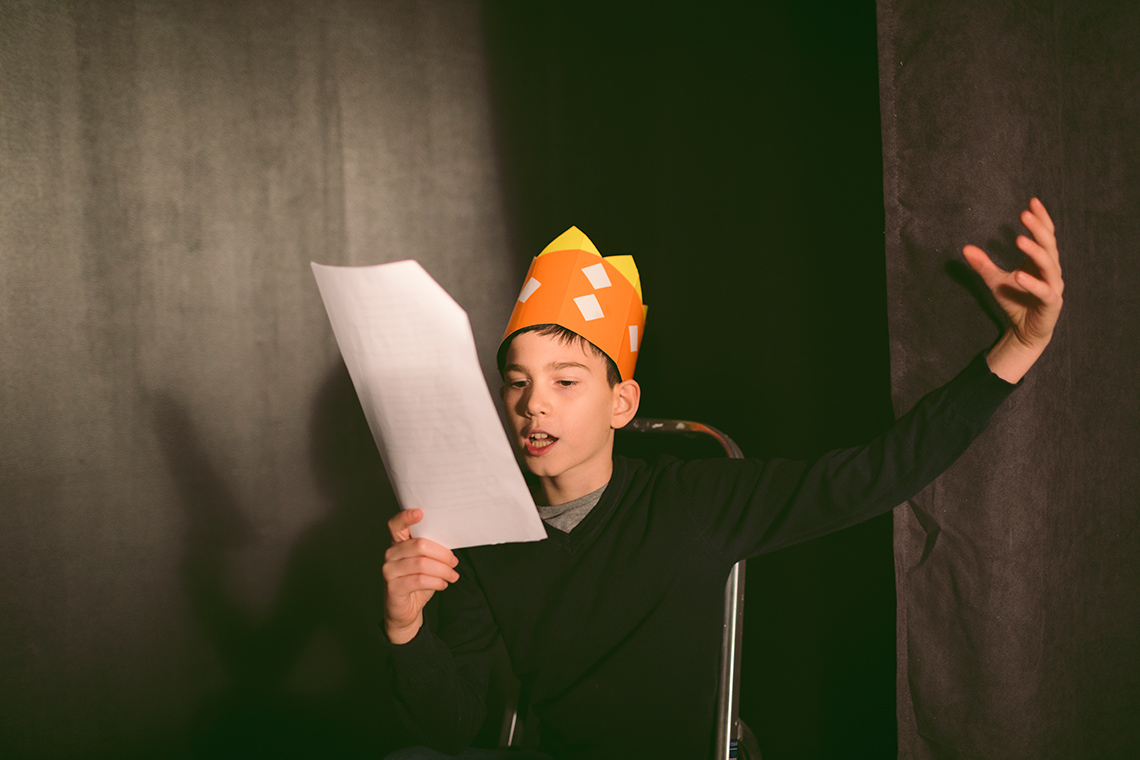
Use the plan you created in the Action section to practise your drama piece. When you are ready, perform your piece for a partner, if possible, or create a video recording.
You may also create a detailed written or audio description of how you would perform your drama piece.
Consider adding your work to your drama portfolio.
Portfolio
Reflection questions
Reflect on the following questions and record your thoughts using a method of your choice.
- How did you feel while creating your drama piece?
- What were some of the strengths in your drama work?
- Is there something from your planning or performance that you want to continue to practise and develop? Explain.
Reflection
As you read through these descriptions, which sentence best describes how you are feeling about your understanding of this learning activity? Press the button that is beside this sentence.
I feel...
Now, record your ideas using a voice recorder, speech-to-text, or writing tool.
